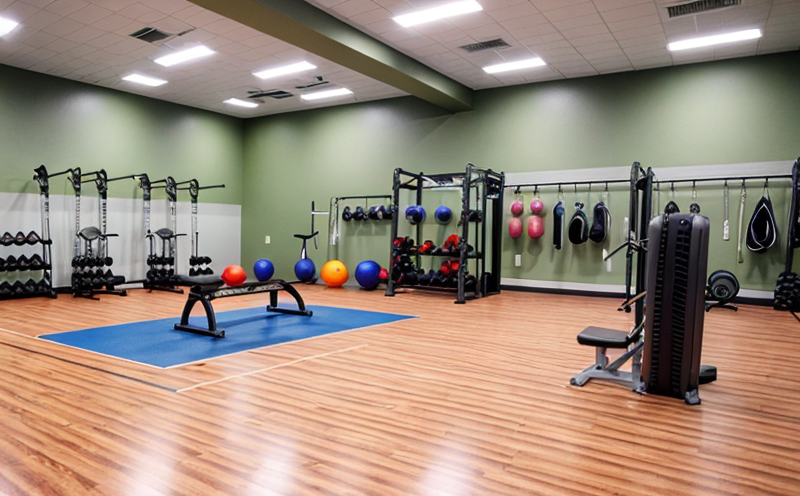Flexural Strength Testing of Fitness Equipment
In the realm of consumer products and product safety testing, particularly within the category of sporting goods and fitness equipment testing, flexural strength testing is a critical process. This test evaluates how well materials used in fitness equipment resist bending stresses without fracturing or yielding beyond acceptable limits. The importance of this cannot be overstated as it directly impacts the durability, reliability, and safety of fitness equipment.
The flexural strength test is performed using standardized procedures that ensure consistency and accuracy across different laboratories. Specimens are carefully prepared from the materials used in the fitness equipment, such as steel alloys or composite materials like fiberglass reinforced polymers (FRP). The specimens are then subjected to a load until they bend and ultimately break.
The test setup typically includes a three-point bending test where the specimen is supported at two points and loaded at one end. This method simulates real-world loading conditions that fitness equipment might encounter during use, such as the stress placed on a barbell or the strain on a handlebar during exercise.
Understanding the flexural strength of materials used in fitness equipment is crucial for several reasons:
- To ensure compliance with international standards such as ISO 6786, which specifies test methods for determination of flexural strength and modulus of elasticity of plastics.
- To enhance product safety by identifying materials that may fail under typical usage conditions, thereby preventing potential accidents.
- To optimize the design and manufacturing processes to improve the longevity of fitness equipment.
The test results provide valuable insights into material performance. For instance, a higher flexural strength indicates better resistance to bending stress, which is essential for high-quality fitness equipment that can withstand rigorous use by consumers. This data informs design decisions and helps manufacturers make informed choices about the materials they select.
Scope and Methodology
| Aspect | Description |
|---|---|
| Test Specimen Preparation | The test specimens are typically rectangular or cylindrical and cut from the actual parts of fitness equipment. They must be prepared to ensure a smooth surface, free from defects that could affect the results. |
| Loading Mechanism | A three-point bending setup is used where the specimen is supported at two points and loaded at one end until it fails. This mimics real-world loading conditions for fitness equipment. |
| Load Application | The load is gradually increased until the specimen breaks, and the maximum load that can be sustained before fracture is recorded as the flexural strength. |
International Acceptance and Recognition
The results of flexural strength tests are widely recognized in various international standards, including ISO 6786 for plastics and ASTM D790 for rubber-like materials. Compliance with these standards is crucial for manufacturers aiming to export their products globally.
- ISO 6786: This standard provides a method of determining the flexural strength and modulus of elasticity of plastic materials, which are commonly used in fitness equipment components such as handlebars or pulleys.
- ASTM D790: This test method is applicable to rubber-like materials, ensuring that these materials meet the necessary durability standards for use in resilient parts of fitness equipment like mats and flooring.
Use Cases and Application Examples
Determining the durability of metal frames used in exercise bikes. High flexural strength ensures that the frame can withstand the repetitive bending stress during cycling sessions.
Evaluating the longevity of composite materials used in rowing machines, where continuous use puts significant strain on these parts.
Assessing the robustness of rubber mats for yoga and pilates equipment to ensure they can withstand repeated impacts during workouts without degrading or breaking.





